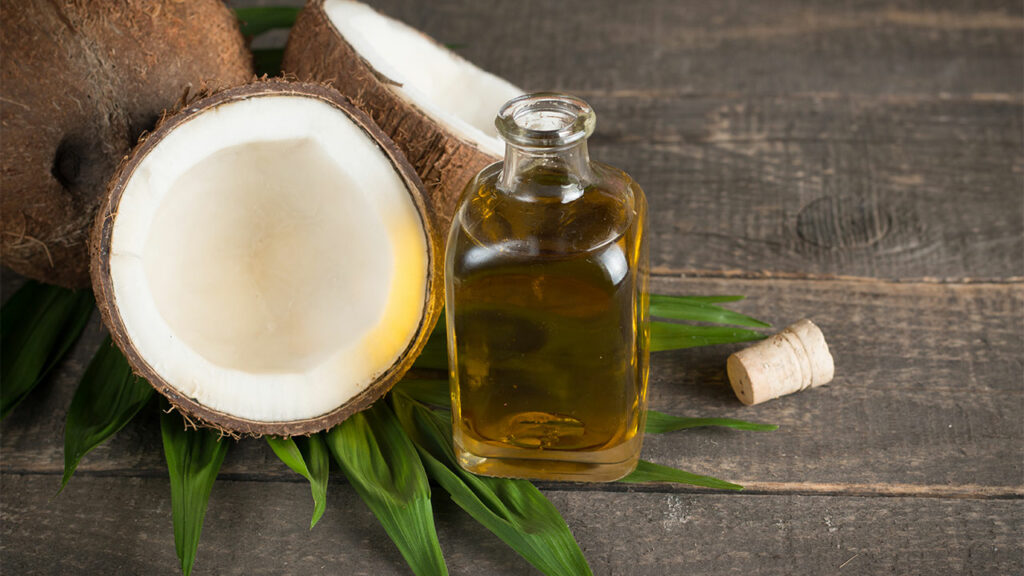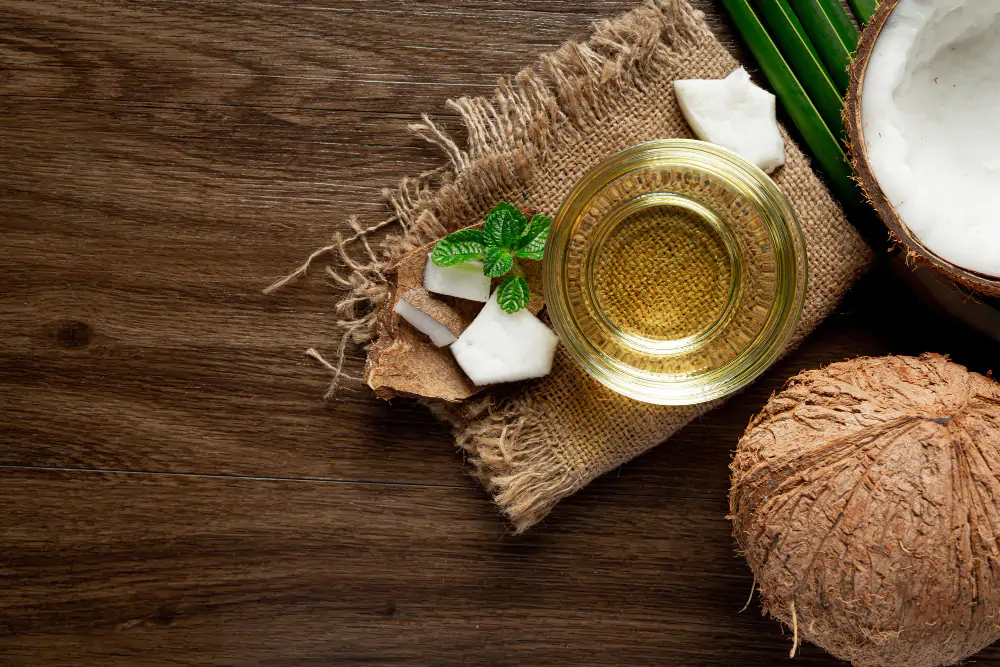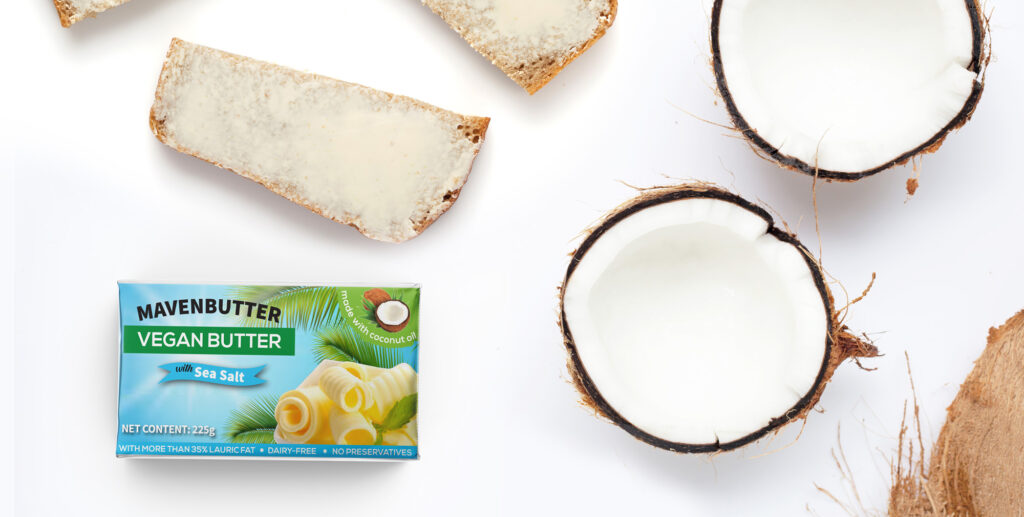
When choosing between coconut oil and palm oil for cooking, it’s important to know what makes each one unique. The difference between coconut oil and palm oil doesn’t just lie in their taste but in where they come from, how they’re made, and their health benefits. Each oil type brings something special to our cooking and the flavors we enjoy in many ways.
Whether it’s the tropical vibe of coconut oil or the versatile nature of palm oil, both have their unique roles in kitchens and industries worldwide. Let’s explore how these oils can add their own flair to our food and cooking practices.
Coconut Oil vs Palm Oil: Understanding Their Sources and Production
Both coconut and palm oils take different journeys from their sources to our kitchens, each going through specific processes. Understanding these processes helps us appreciate the difference between coconut oil and palm oil, especially when choosing the right oil for cooking and food production.

Coconut Oil: A Journey from Tree to Table
Coconut oil is a major product from prominent coconut oil exporters and is sourced from coconut meat found in tropical regions. In the Philippines, the regions of CALABARZON, Zamboanga Peninsula, Davao, and Northern Mindanao are considered major producers of coconut in the country.
No matter the method used, coconut oil production is labor-intensive. It involves peeling off the coconut’s husk and shell to reach its flesh. This requires specialized machinery due to the husk and shell’s hardness. Once these outer layers are taken off, a thin brownish layer between the coconut’s kernel and shell is also removed. This ensures that only the pure white coconut meat is left for oil production.
There are two options for producing and harvesting the benefits of coconut oil: heated methods or cold-pressed methods.

Heated Methods
Techniques that use heat involve a hot press, or ‘expeller press,’ which draws oil out of dried coconut kernels. This dried pulp is commonly referred to as ‘copra.’
Three primary methods are currently used for hot-pressing coconut oil:
- Centrifuge. This method extracts oil by spinning coconut meat at high speeds, preserving the coconut’s natural flavor.
- Heated Expeller Method. This technique uses hexane as a solvent to extract oil from coconut meat.
- Chemical Extraction. Through this method, coconut oil is refined using potent solvents such as lye.
Cold-Pressed Methods
Cold-pressed methods involve harvesting oil directly from fresh coconut meat. Mature coconuts are also chosen for cold-pressed methods due to their higher oil content. One potential benefit of extracting coconut oil through cold-pressed methods is that it preserves more of the coconut’s nutrients.
Cold-pressed techniques include:
- Expeller Cold-Press. This method grinds and dries coconut kernels at low temperatures before pressing them. Afterward, the filter-press stage purifies the oil.
- Fermentation. This technique combines ground coconut with water and extracts milk via an expeller. The milk settles over 24 hours, separating into layers, with the oil layer being filtered to remove impurities.

Palm Oil: From African Origins to Global Kitchens
Although palm oil is originally from Africa, its industry has expanded significantly. Today, palm oil is mainly produced in Indonesia and Malaysia. Additionally, palm oil in the Philippines continues to be a growing industry, particularly in southern regions such as Caraga and SOCCSKSARGEN.
Palm oil is extracted from the fruit of oil palm trees. Although there are several differences between coconut oil and palm oil, both of their production processes include many detailed steps. Palm oil production involves:
- Milling. Through sterilization, high-pressure steam deactivates enzymes and eliminates bacteria from fresh palm fruit bunches. Threshing then separates the fruit from the bunches, followed by pressing to extract crude palm oil (CPO). The CPO then undergoes clarification to remove impurities using centrifuges or settling tanks.
- Refining. This process starts with degumming, where the oil is mixed with water to further remove gums and impurities. It is then neutralized with an alkaline solution to reduce free fatty acids. Finally, bleaching and deodorization removes pigments, odors, and any remaining flavors.
- Fractionation. The fractionation process modifies palm oil for various applications. It involves cooling and crystallizing the refined oil, then filtering it into olein (liquid) and stearin (solid). These are further processed, with olein used in cooking oils and stearin in margarine and shortening.
The Benefits of Using Coconut Oil and Palm Oil
When comparing the benefits of coconut oil and palm oil, it’s also important to consider their nutritional profiles and health impacts.

Advantages of Coconut Oil
- Medium-Chain Triglycerides. Coconut oil is 70% medium-chain triglycerides (MCT)—fats that are converted into ketones essential for energy. Research has shown that MCTs only travel to the liver instead of being stored as fat in the body. Because of this, it’s easily converted into energy and helps weight loss. Ketones have also been associated with reducing symptoms of Alzheimer’s disease by providing energy to damaged brain cells.
- Immune System Booster. Fifty percent of coconut oil is lauric acid, which has antimicrobial and anti-viral properties and boosts the immune system. It also improves cognitive functions, metabolism, and hair and skin health.
- Healthier Alternative. While coconut oil is high in saturated fat, it’s often considered healthier than animal fats. However, due to its high saturated fat content, some nutritionists recommend limiting its consumption.
Both oils are high in fat content but vary significantly in the types of fats they contain. Versus palm oil, coconut oil is almost entirely composed of saturated fat. This accounts for about 90% of coconut oil’s total fat content. Palm oil has a more balanced fat profile, with higher amounts of monounsaturated and polyunsaturated fats compared to coconut oil.
Advantages of Palm Oil
- Brain Health. Palm oil is packed with tocotrienols, a type of vitamin E known for its antioxidant properties, which may bolster brain health. Studies suggest these tocotrienols can protect the brain’s fats, slow dementia, lower stroke risk, and prevent brain lesions.
- Heart Health. Although research results have been mixed, palm oil is also associated with protective effects against heart disease. It’s been linked to lowering LDL (bad) cholesterol and improving HDL (good) cholesterol levels.
- Vitamin A Boost. Due to its high carotenoid content, red palm oil can improve vitamin A levels, especially in people who are deficient or at risk of deficiency.
In essence, the choice between coconut oil and palm oil depends on the specific health goals, dietary needs, and type of cooking involved. While coconut oil is suitable for certain kinds of preparations, palm oil’s balanced fat composition makes it a versatile option in the kitchen.

Choosing Between Coconut Oil vs Palm Oil for Cooking
When using either coconut oil or palm oil for cooking, your choice boils down to the type of food you’re making and the flavors you’re aiming for. It’s about bringing out the best in your dishes, whether you need the subtle, sweet presence of coconut or the savory, earthy profile of palm oil.
Another thing to consider is the smoke point of each oil, which is the temperature at which the oil begins to smoke. Heating oil beyond this point can lead to the formation of free radicals and other harmful substances and can negatively affect the flavor of your dish.
Baking
In baking, both coconut and palm oil can do the job, but coconut oil stands out. This is due to its lower smoke point (around 176°C for unrefined oil and 204°C for refined). One benefit of coconut oil is its ability to substitute for butter in baking, making it ideal for vegan and vegetarian dishes.

Frying
When it comes to frying, especially deep frying, palm oil takes the lead. This is because of its high smoke point (232°C). This palm oil benefit makes it a top choice for achieving crispy, crunchy textures. On the other hand, coconut oil’s lower smoke point means that it works better for shallow pan frying.
Sautéing and Light Cooking
For sautéing or light cooking, both coconut and palm oil have their uses. Unrefined coconut oil brings a unique flavor to dishes and is great for adding a bit of character with its coconut essence. Refined palm oil, neutral and versatile, fits any dish without changing its original taste, making it a reliable choice for various cooking styles.

Coconut vs Palm Oil: Key Takeaways for Your Kitchen
It’s clear that coconut oil and palm oil have their special spots in the kitchen. Coconut oil is great for adding flavor, baking, and lighter cooking, while palm oil is a better choice for high-heat cooking like deep frying.
The choice between coconut oil and palm oil isn’t just about flavor; it’s about picking the right tool for the job in your kitchen. At Oleo-Fats, we take great pride in providing world-class coconut oil and palm oil to local and international markets. Our commitment to excellence ensures that you get the most out of each oil to enhance your cooking and food production needs.
For top-quality coconut and palm oils, Oleo-Fats is your trusted partner. Contact us today to enhance your food production with our world-class oil options!


